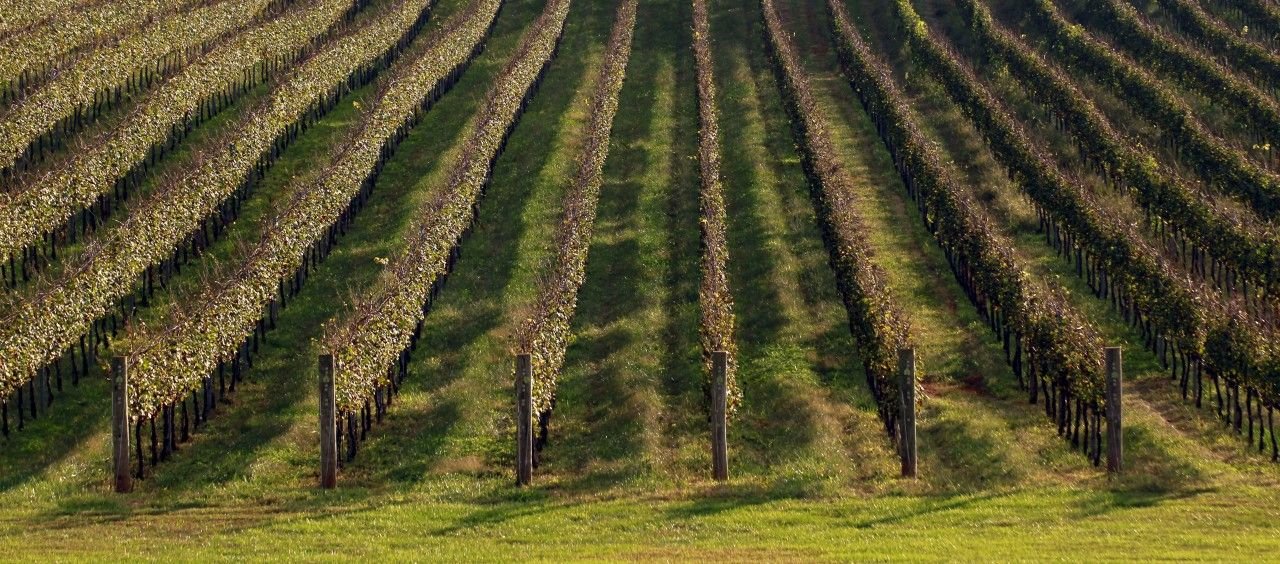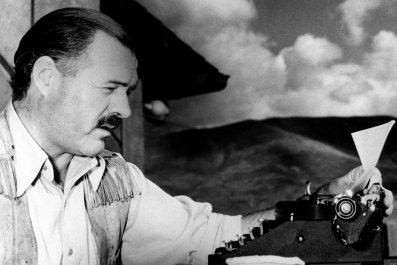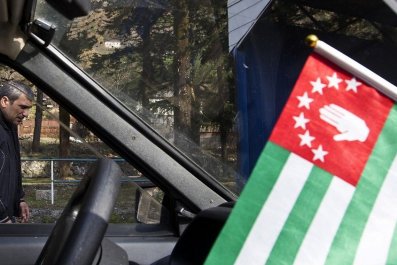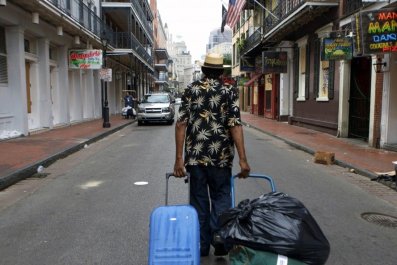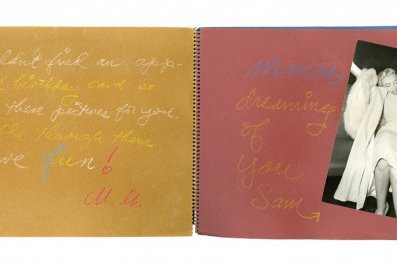The locals in Charleston, S.C., must have taken me for disturbed. In restaurants, I persistently requested South Carolina wine, and various well-meaning waiters told me politely - in this city renowned for its politeness and, more recently, its cuisine - that no such thing existed and, if it did, I should avoid it by all means. Would I maybe like a mint julep?
At one upscale eatery on Kiawah Island, a barkeep snarled through his neo-woodsman beard that his establishment sold European wines, not local swill.
There was more than just a hint of insecurity in that response, a shame about homegrown juice that you're unlikely to encounter in most of the rest of the country. In Ohio, the same query might have a produced a merlot from Firelands Winery; in New Mexico, it would have maybe been a sauvage from Gruet Winery. There's even a wine trail near my parents' house in central Connecticut, just beyond the strip-malls and suburban lawns.
Americans love wine, guzzling 749 million gallons in 2012, according to the Wine Institute. That's double what we were drinking two decades ago, when wicker-basket chianti was a sign of sophistication. Not only that, but the locavore movement has made states across the nation eager to embrace wine culture and the tourism it brings.
While the vast majority of the country's 7,500 wineries are in California, Texas has 204 and Pennsylvania 166, according to industry publication Wines and Vines. Can you picture all those vineyards filling up on weekends with moneyed young creatives who, as they sip Hill Country merlot, rave about the merits of Dallas or, ordering a bottle of riesling from Allegheny Cellars, laugh at their Manhattan-bound friends who have yet to discover the mysteries of Pittsburgh? There is more to wine than just wine.
Tell that to Louisiana and Mississippi, each with only about a half-dozen wineries that use local grapes. That dry patch is in stark contrast to the region's booming food culture. When the latest generation of haute chefs went back to the land, it discovered the backcountry goodness of bacon, the warm pleasures of the grit, now to be found in restaurants like Brooklyn's Seersucker and San Francisco's Brenda's French Soul Food. And the bourbon of Kentucky is adored by the DIY hipsters running big-city bars and kitchens: A bottle of Pappy Van Winkle produced in Frankfort, Ky., may run you about $2,700.
But what about the wine? I wanted Southern wine the way Ahab wanted his white whale.
The problem with Southern wine has long been sweetness. Most people like their wine dry, unless they are 15 or sipping a thimbleful after dinner. The vast majority of dry wine comes from the species Vitis vinifera, the Old World grapes of Europe that ferment deliciously into cabernet sauvignon, gewürztraminer, pinot noir, malbec, riesling and way too many other varietals to list.
Most wine from the South, on the other hand, comes from the Vitis rotundifolia grape, known as the muscadine, and is generally fruity and unsubtle. The wine writer Paul L. Roberts describes its prevailing flavor as "a cloying, bubble-gum smell and taste."
The region is not new to crushing grapes. Explorers in the employ of Sir Walter Raleigh wrote in 1584 of what was to become North Carolina that it was "so full of grapes, as the very beating and surge of the sea overflowed them...in all the world the like abundance is not to be found."
One of the vines from which they cultivated grapes, a gnarled old muscadine beast on Roanoke Island called the Mother Vine, is believed to be the oldest harvested grapevine in the United States. Some of that sweet-as-molasses Roanoke wine - known as scuppernong, which is also a name for the muscadine grape - was sent home to Queen Elizabeth I. Spanish settlers in Florida also made wines in the 16th century.
Restless to sample what remained of the region's wine, which I refused to believe was as bad as I had been warned, I headed south from Charleston into the live-oak thickets of Wadmalaw Island, where the moss hangs thick and dirt-roads are named after ancient, long-gone plantations.
There, past the last working tea plantation in the United States, near the bucolic terminus of Bears Bluff Road, sits Irvin House Vineyards, which is a microcosm of winemaking in the Deep South.
A small operation nestled in a shady clearing, the vineyard also doubles as a petting zoo, a distillery (the popular Firefly sweet-tea vodka is made here, as well as a decent tea-flavored bourbon) and performance space. Started by Jim and Ann Irvin in 2001, it is planted with the same muscadine grapes harvested by Raleigh's men almost 400 years ago.
Then, as now, the wine - red or white - tends to be sweet, the reds resembling a rosé and the whites tasting like a less refined sauterne. I took a bottle back to New York; most everyone I shared it with enjoyed the novelty of drinking South Carolina wine more than the actual taste of South Carolina wine.
If the wine lacked in quality, spending an afternoon at Irvin House did not lack in enjoyment. Absent entirely was the pretentious piety one finds in the tasting room of Napa. "We're out at the end of a dead-end road," Irvin says. "I didn't think very many people would come out here."
He was felicitously wrong on this account. By noon on a warm Saturday in late December, the winery was filled, as if a state fair were afoot. Tourists from Illinois drank Irvin House wine; tourists from Wisconsin drank Firefly moonshine. They served spiced wine, gave out popcorn. Nobody talked about terroir or mouthfeel.
This is, to be fair, tough country in which to grow wine grapes. First of all, the humidity is inhospitable to grapes. On top of that, the climate creates a petri dish for the bacterium Xylella fastidiosa, which leads to Pierce's Disease, the scourge of wine growers, explains David Himelrick of the Louisiana State University Agricultural Center.
Old World vinifera grapes are especially rich food for the bacterium, which is less capable of surviving in cooler, drier regions like Oregon and Washington state. Muscadine grapes are resistant to the blight, thus leading to their prevalence across the Deep South.
Maybe what makes Southern wine so intriguing is that it is so unpredictable. And since nobody is really looking for serious wine down here, the pressures of Napa and Sonoma simply don't exist in, say, Hillsborough County in Florida, allowing vintners to experiment and, gosh darn it, have a little fun.
Sometimes, too much fun - key lime wine is an offense against the very enterprise of viticulture. But the very same state responsible for that atrocity can also make some decent wines.
So can Georgia. No, not the Eurasian country that is the birthplace of Josef Stalin and some of Europe's oldest vineyards. The Georgia in question borders Tennessee.
"We are changing hearts and minds down here," insists Raymond DeBarge, an eye surgeon who grows his grapes in northern Georgia and sells them at a vineyard in Chattanooga, Tenn. Among the Old World wines he makes are an albarino and bourdeaux, all coming from what he calls "100 percent unadulterated vinifera fruit from my piece of paradise on Pigeon Mountain." He acknowledges the region's long-standing tastes for sweet wine but believes his traditional wines will catch on.
Michael Kaiser, communications director for the lobbying group WineAmerica, praises the "serious wine" being grown in Georgia, while also commending the Norton issues of Missouri and Virginia. It must be admitted, however, that his attentions are not entirely on the South. The next great wine region in the United States is in Idaho, he says, much of which mirrors the auspicious climate of neighboring Washington. Also look out for Arizona and New Mexico.
Many of my Manhattan friends thought it a strange enterprise, to delve into the wines of Mississippi and Georgia. But dare I say, at the expense of losing some of those very same friends, that your average New York sophisticate all too often can be found clutching a plastic cup of Yellow Tail shiraz or one of the Trader Joe's offerings known as "Two Buck Chuck." In relative terms, at least, South Carolina has no cause for shame.



